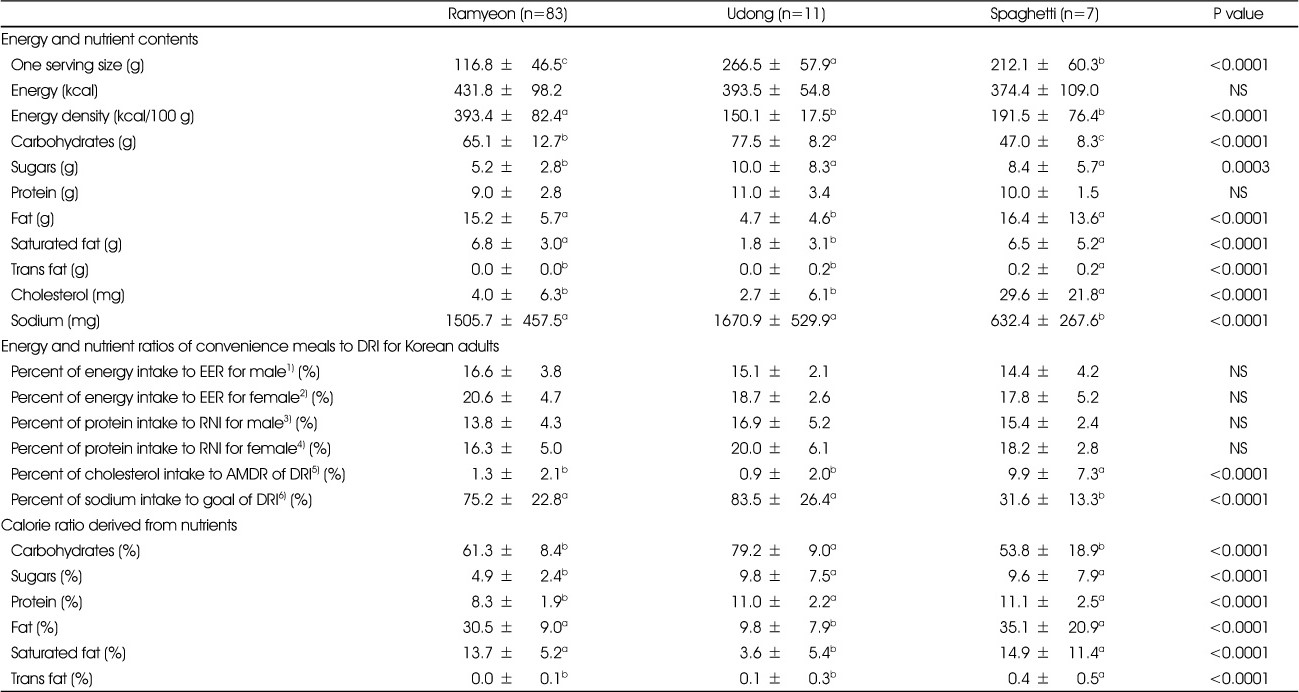Nutritional Evaluation of Convenience Meals in Convenience Stores near the Universities
Article information
Abstract
Objectives
Rapid economic growth and industrial development in South Korea have led to a great change in dietary patterns, and the use of convenience foods has continuously increased. This study was performed to evaluate the energy and nutrient contents of convenience foods at convenience stores near the universities as a meal.
Methods
Data was collected by visiting 22 convenience stores near some universities in Chungbuk and Seoul and by checking nutrition labels on convenience foods at the stores. Data of a total of 338 food items were collected, and divided into five groups according to the food categories; rice products (n=156), noodles (n=101), burger/sandwiches (n=62), Tteokbokkis (n=11), and dumplings (n=8). Further, rice products, noodles, and burger/sandwiches were divided into subcategories.
Results
The proportion of calories from carbohydrates was high in the rice products and tteokbokki, while the rate of calories from fat was high in burger/sandwiches and dumplings. Among the rice products, the proportion of carbohydrate calories was high in a one-dish food, rice with soup, and triangular kimbap, while the proportion of calories from fat in lunch boxes was high. In the noodles category, ramyeon and spaghetti had a high percentage of fat calories, while udong had a high percentage of carbohydrate calories. The ratio of the calorie content in relation to the KDRIs for adults aged 19-29 years, lunch boxes provided about 1/3 of daily required energy. However, the amount of calories as one meal was not enough for other types of rice products except for lunch boxes. Ramyeon was high in calories, fat, and sodium, but low in protein content. The burger/sandwiches had a high percentage of fat and sodium.
Conclusions
Our results showed several nutritional limitations of convenience meals in convenience stores according to the type of food. Therefore, college students should limit excessive intake of convenience meals on a regular basis in order to avoid unhealthy food intake patterns. Our results demonstrate the need for educating college students with regard to checking nutrition labels when choosing convenience meals in order to facilitate the selection of food items that contribute to a balanced diet.




